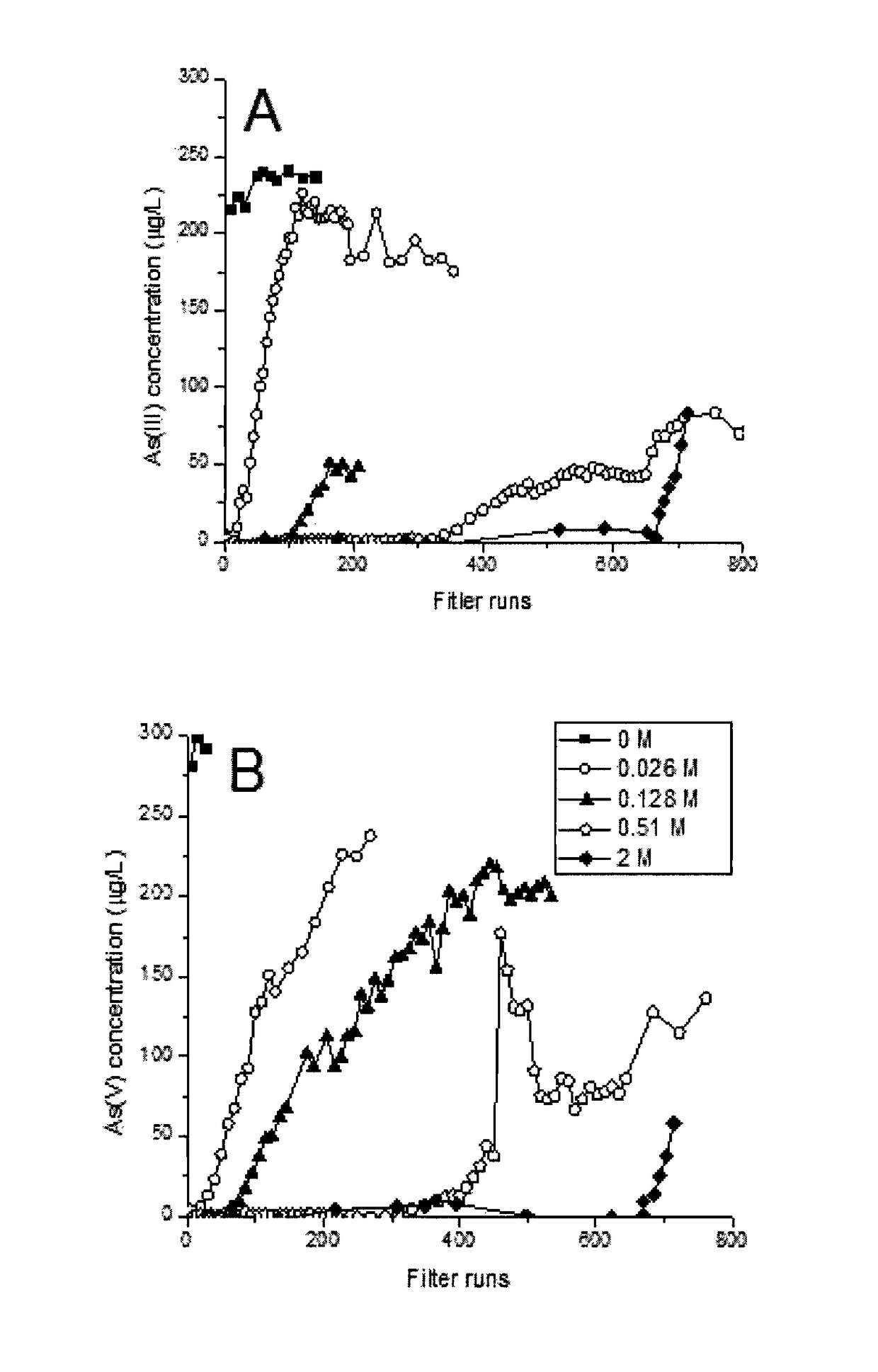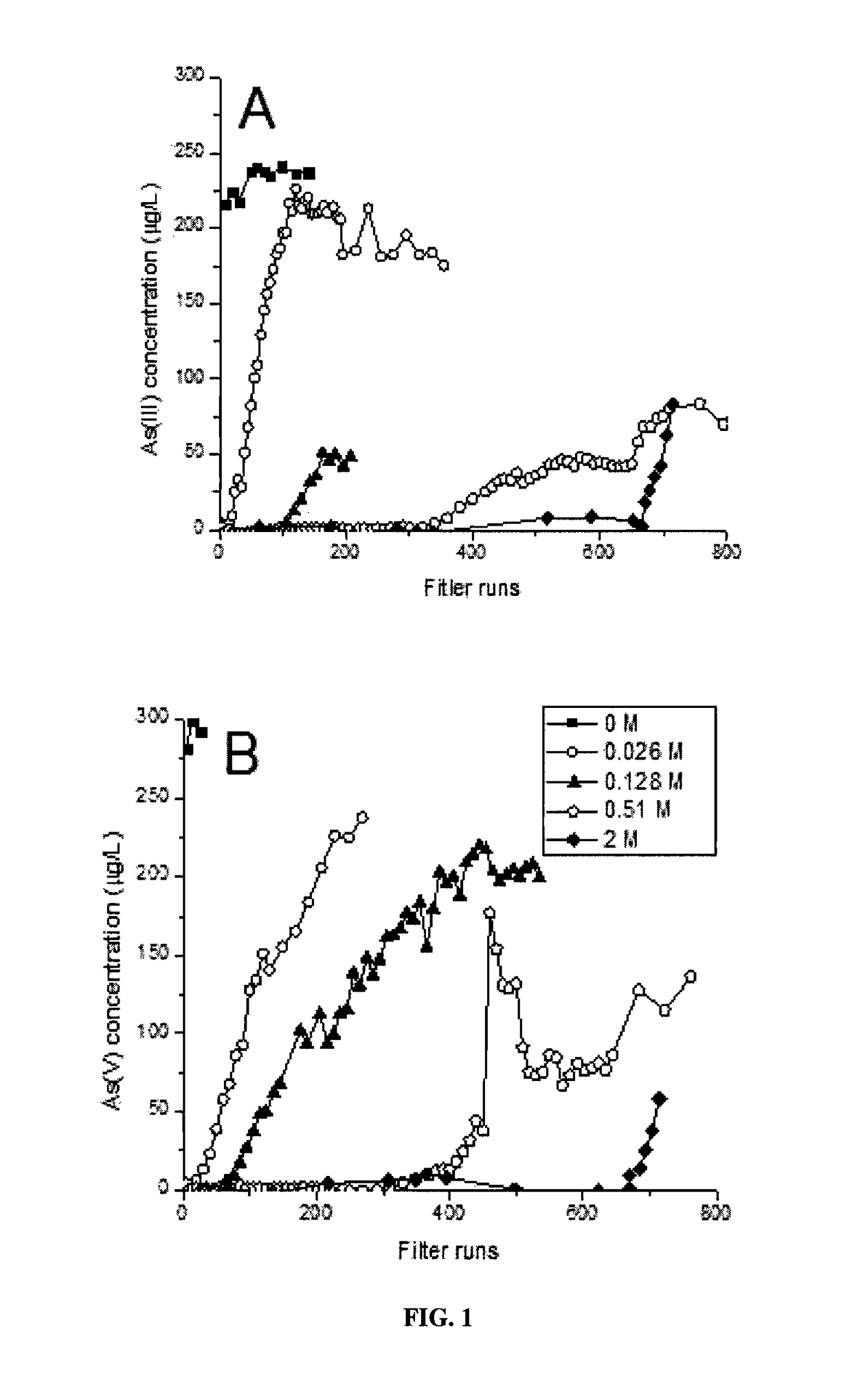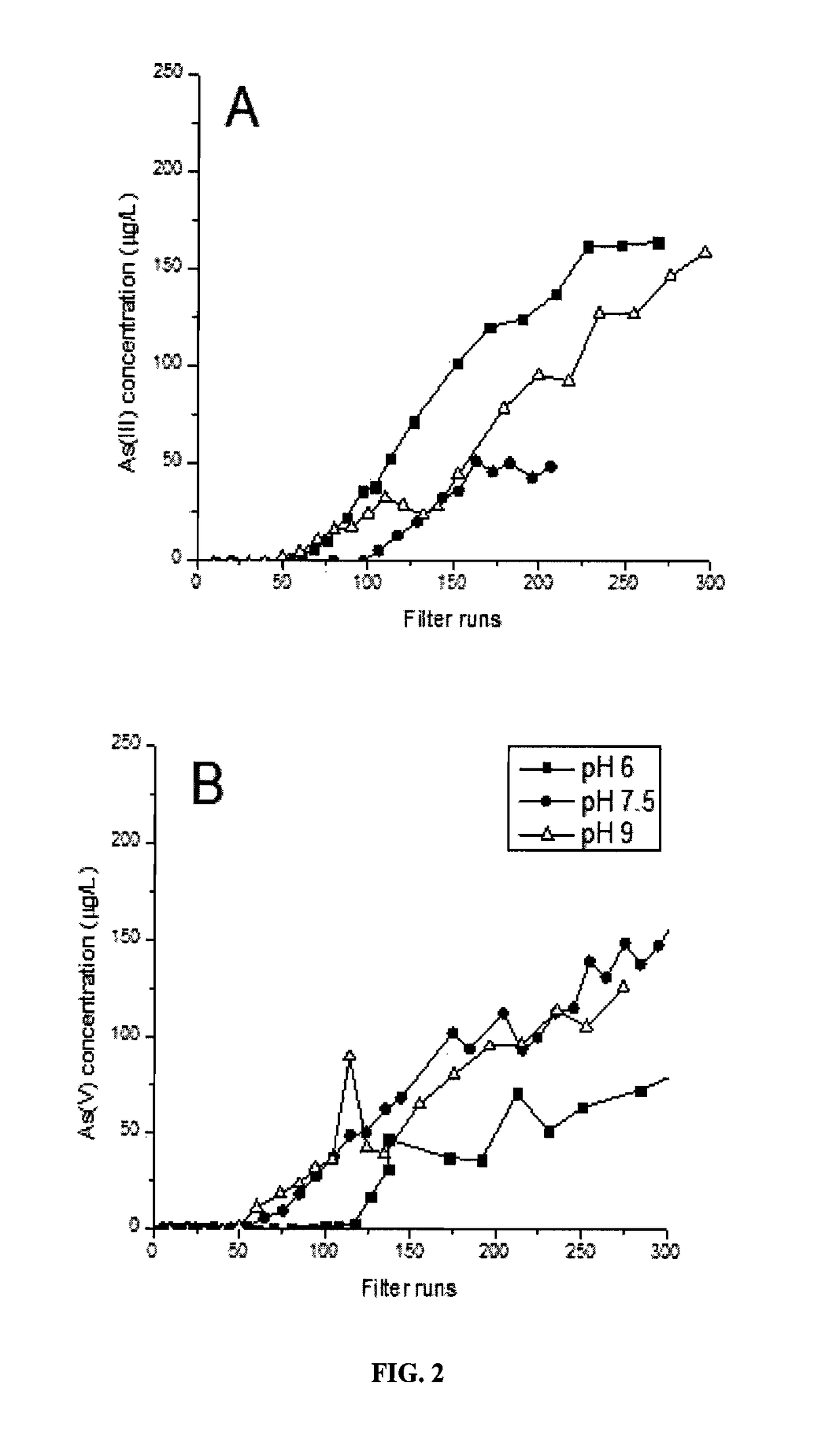Surface modified ceramic filter
a technology of ceramic filters and modified ceramics, applied in ceramicware, filtration separation, separation processes, etc., can solve the problems of dwindling safe drinking water supplies in the world, difficult use, and difficult maintenance, and achieve the effect of simultaneous disinfection. high
- Summary
- Abstract
- Description
- Claims
- Application Information
AI Technical Summary
Benefits of technology
Problems solved by technology
Method used
Image
Examples
example 1
ilter Fabrication
[0088]A 73:27 (wt) clay:sawdust ratio was used in all filter experiments by mixing the 4.55 kg of the dry clay / sawdust mix with 3.6 L tap water and kneaded into a workable homogenous consistency. Full-size ceramic filters were pressed using a hydraulic press and mold. However, most experiments were conducted on 2.0 cm thick, 1.3 cm diameter ceramic plugs in column experiments to simulate filter performance at full scale to allow the testing of a wide range of filters and experimental conditions. The filters were air-dried for at least three days prior to firing in a Carbolite 3216 tube furnace in a ramp from 2° C. to a maximum of 900° C. where it was held for 6 hours before cooling.
[0089]The iron oxide coating on the ceramic filters was created for selected experiments in a process modified from sand coating procedures previously reported. See Benjamin et al., Sorption and filtration of metals using iron-oxide-coated sand, Water Res 30(11) 2609-2620 (1996); Thirunav...
example 2
dsorption Experiments
[0093]Filtration System
[0094]Filter plugs were encased using 10 mL Luer-lock syringes (BD, Franklin Lakes, N.J.) using epoxy adhesive on the sides so that no water could bypass the filter plug. Four eight-channel Minipulse 3 peristaltic pumps (Gilson) were used to continuously pump water through the ceramic plugs. The flowrate through the ceramic plugs of 1.48 mL / hr (0.0247 mL / min) was used to approximate the typical flowrate through a gravity-fed full-scale ceramic filter (or 4.4 L / hr) by scaling surface areas of the full-scale filter to the plug (of approximately 3000 filter-to-plug surface area ratio). A system of stainless steel hypodermic needles (Cadence Science, Cranston, R L), Tygon tubing (Masterflex, Kalamazoo, Mich.), and Luer fittings were used to pass solutions from the feed reservoirs, through the peristaltic pump, the filters, and finally into polypropylene test tubes in a Retriever II sample collector (ISCO, Lincoln, Nebr.). The sample collector ...
example 3
esorption Experiments
[0108]The reversibility of the adsorption of As on the iron-coated filters for both reasons of safety (e.g., inadvertent release of As into filtered water) and regenerability of the filter (e.g., to be able to reuse filters after saturation) is important. In this example, filters loaded to 15% BT of arsenic were then switched to a feed of pure bicarbonate buffered water at pH 7.5. The pH of the feed solution was then adjusted either downwards or upwards at 1.0 pH unit intervals to pH 2.5 or 12.5, respectively. Four equivalent filter bed-volumes were collected at each pH unit. More specifically, to examine potential desorption of As(III) and As(V) from the filters, 0.51 M ferric nitrate coated filters were loaded to 15% BT (with an influent concentration of 250 μg / L) for desorption studies. The initial pH of the feed solutions was pH 7.5, which was then increased or decreased in one-pH-unit for a duration of four effective filter volumes.
[0109]The results showed ...
PUM
| Property | Measurement | Unit |
|---|---|---|
| thickness | aaaaa | aaaaa |
| pore size | aaaaa | aaaaa |
| thickness | aaaaa | aaaaa |
Abstract
Description
Claims
Application Information
 Login to View More
Login to View More - R&D
- Intellectual Property
- Life Sciences
- Materials
- Tech Scout
- Unparalleled Data Quality
- Higher Quality Content
- 60% Fewer Hallucinations
Browse by: Latest US Patents, China's latest patents, Technical Efficacy Thesaurus, Application Domain, Technology Topic, Popular Technical Reports.
© 2025 PatSnap. All rights reserved.Legal|Privacy policy|Modern Slavery Act Transparency Statement|Sitemap|About US| Contact US: help@patsnap.com



